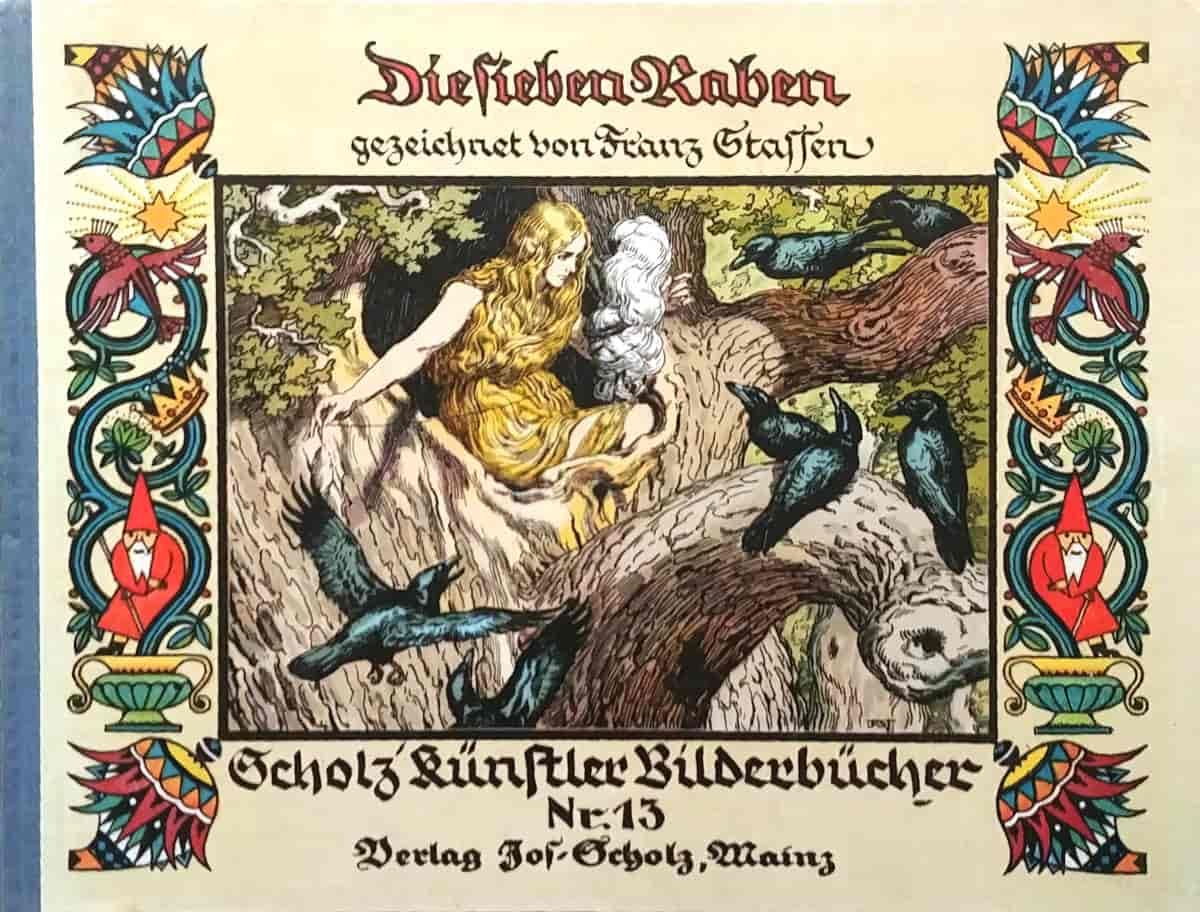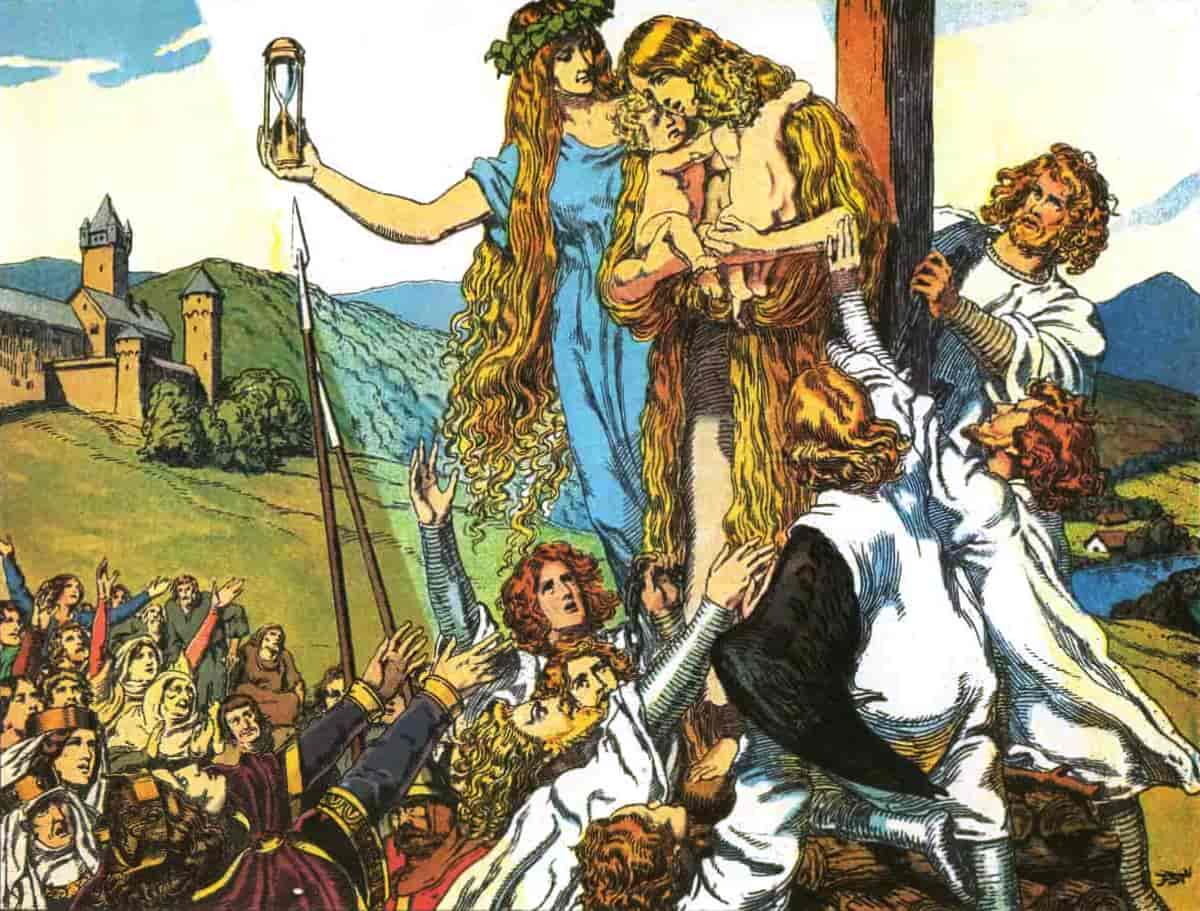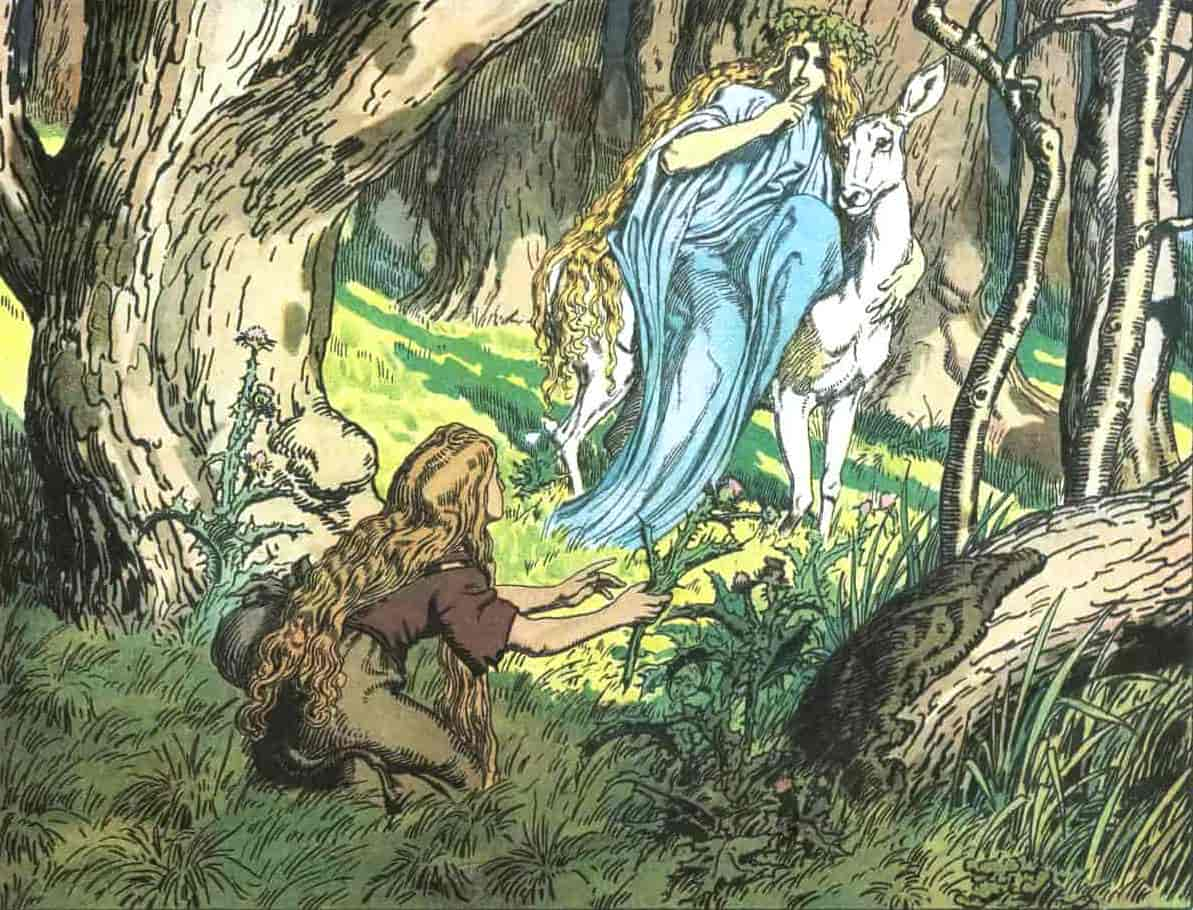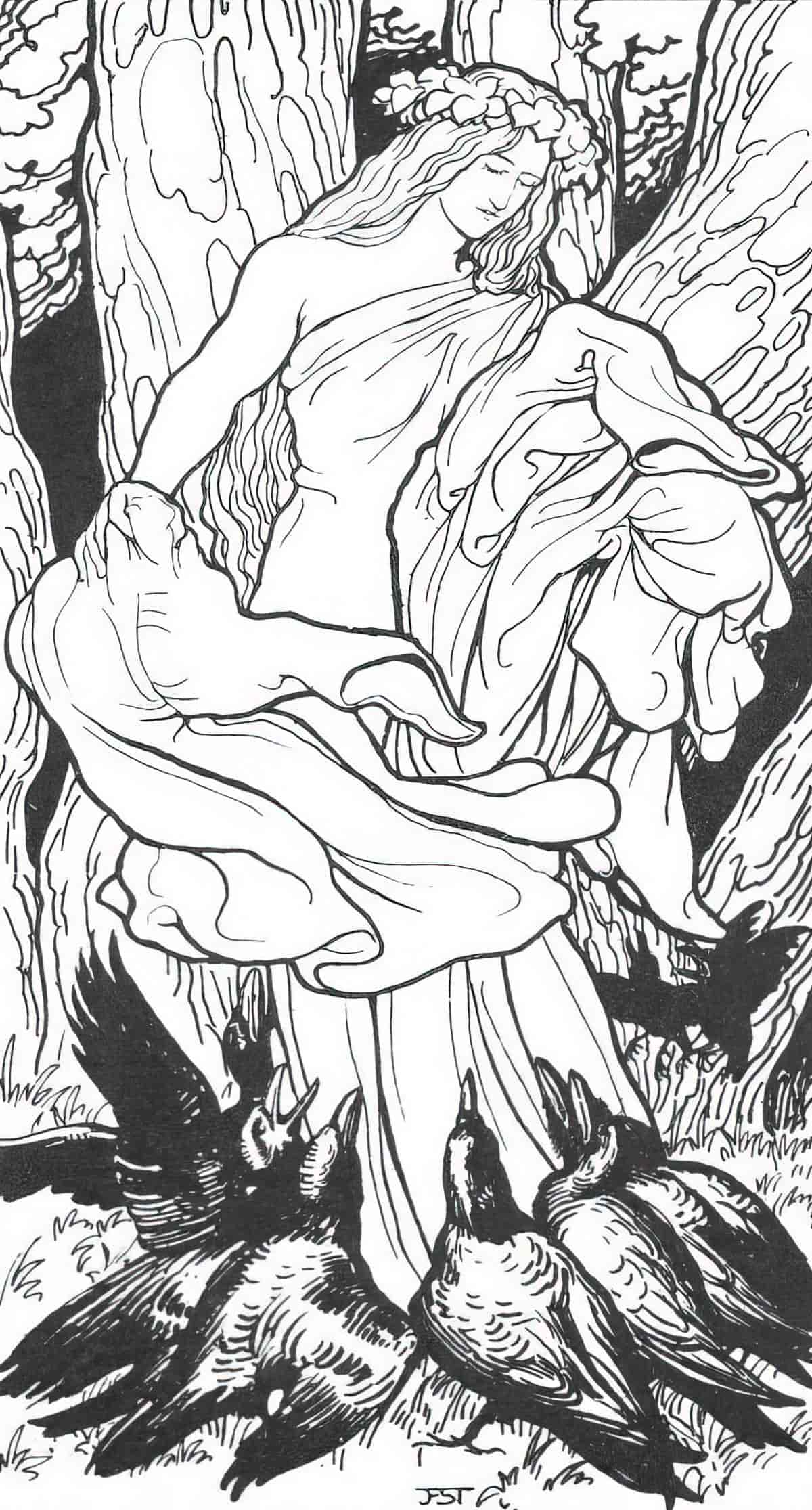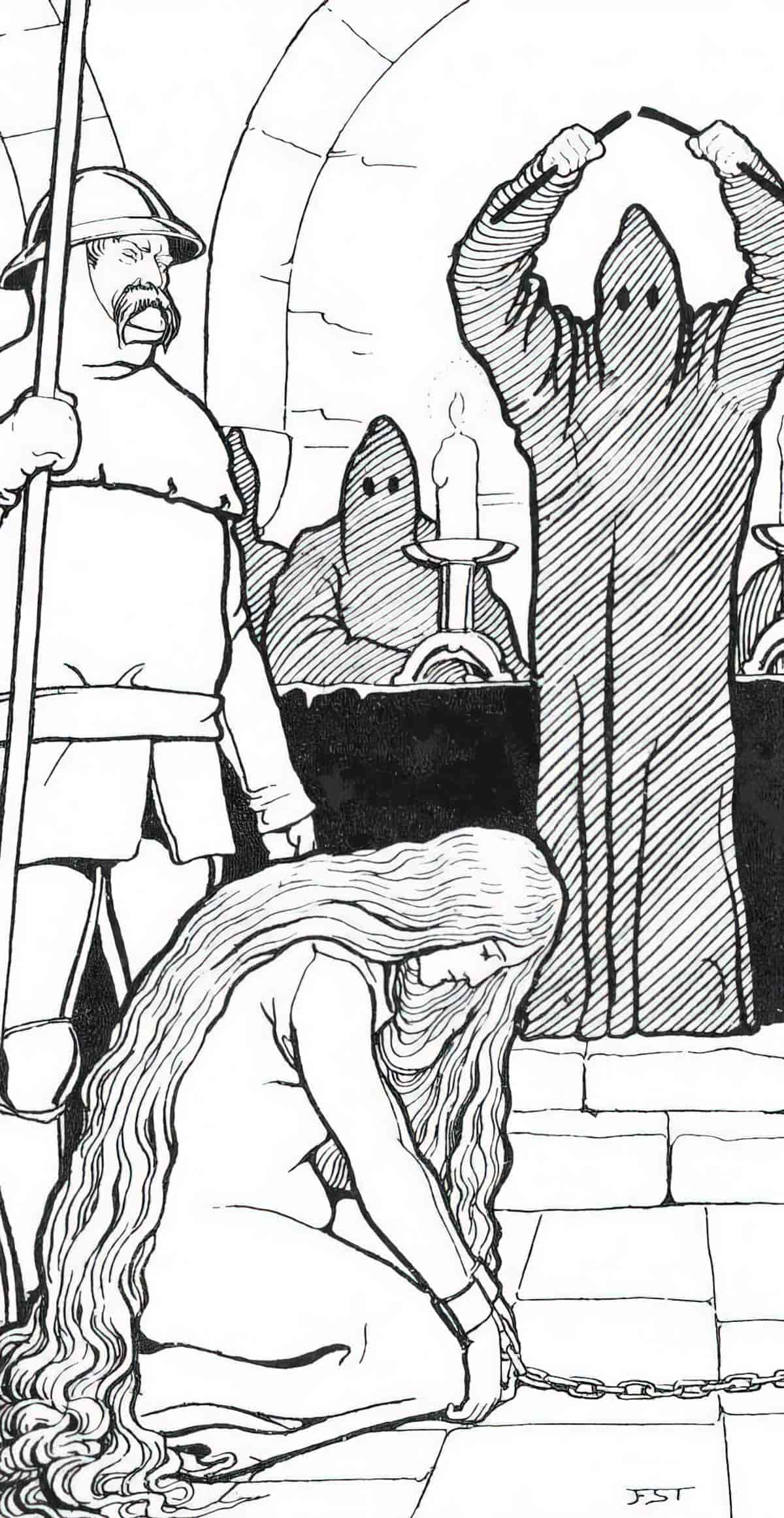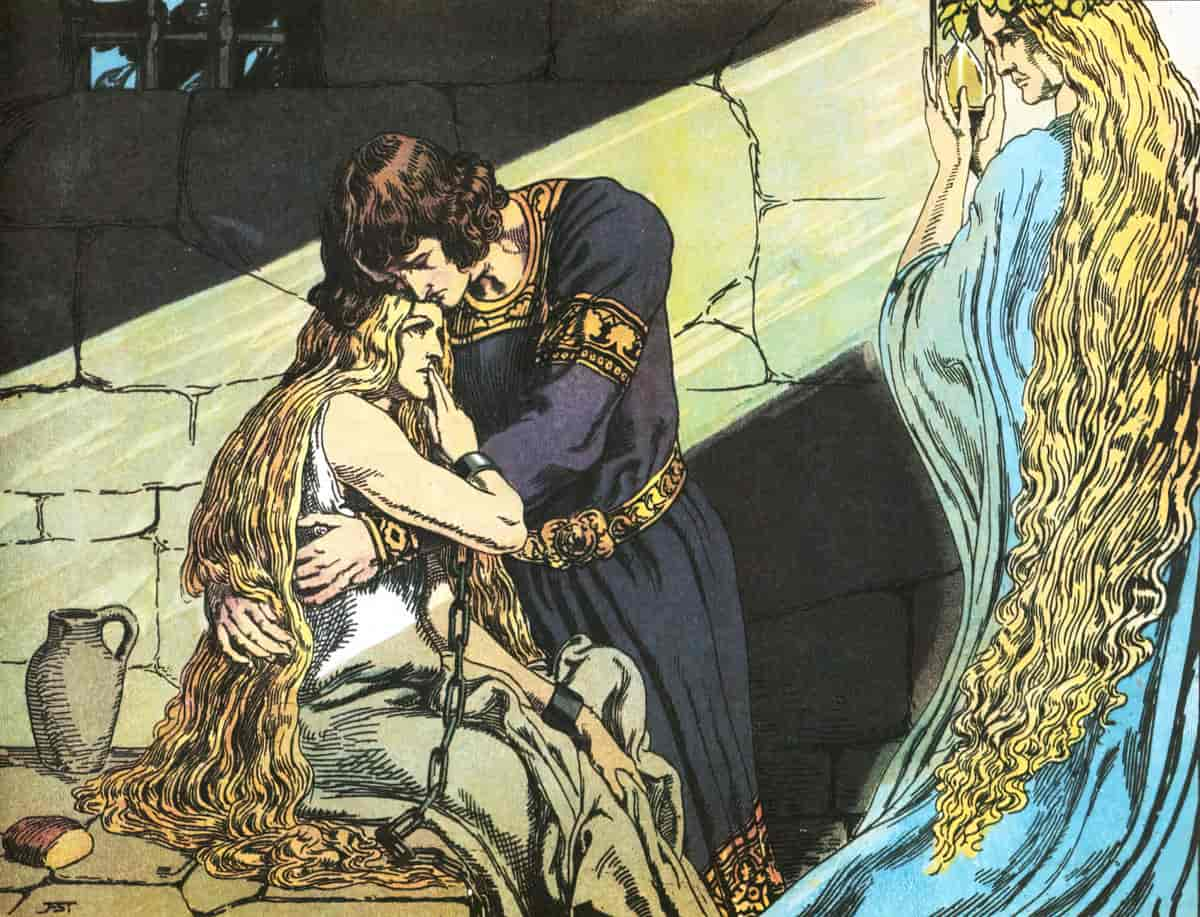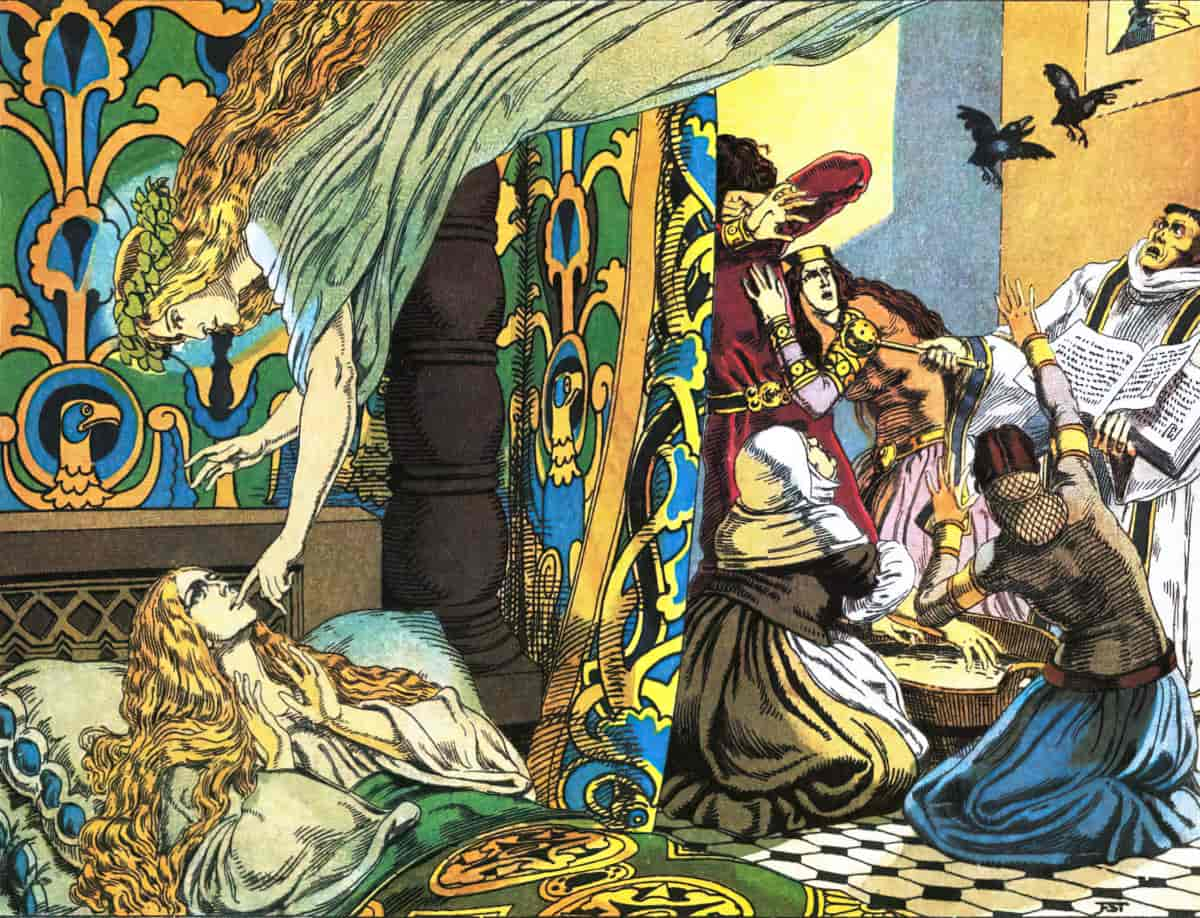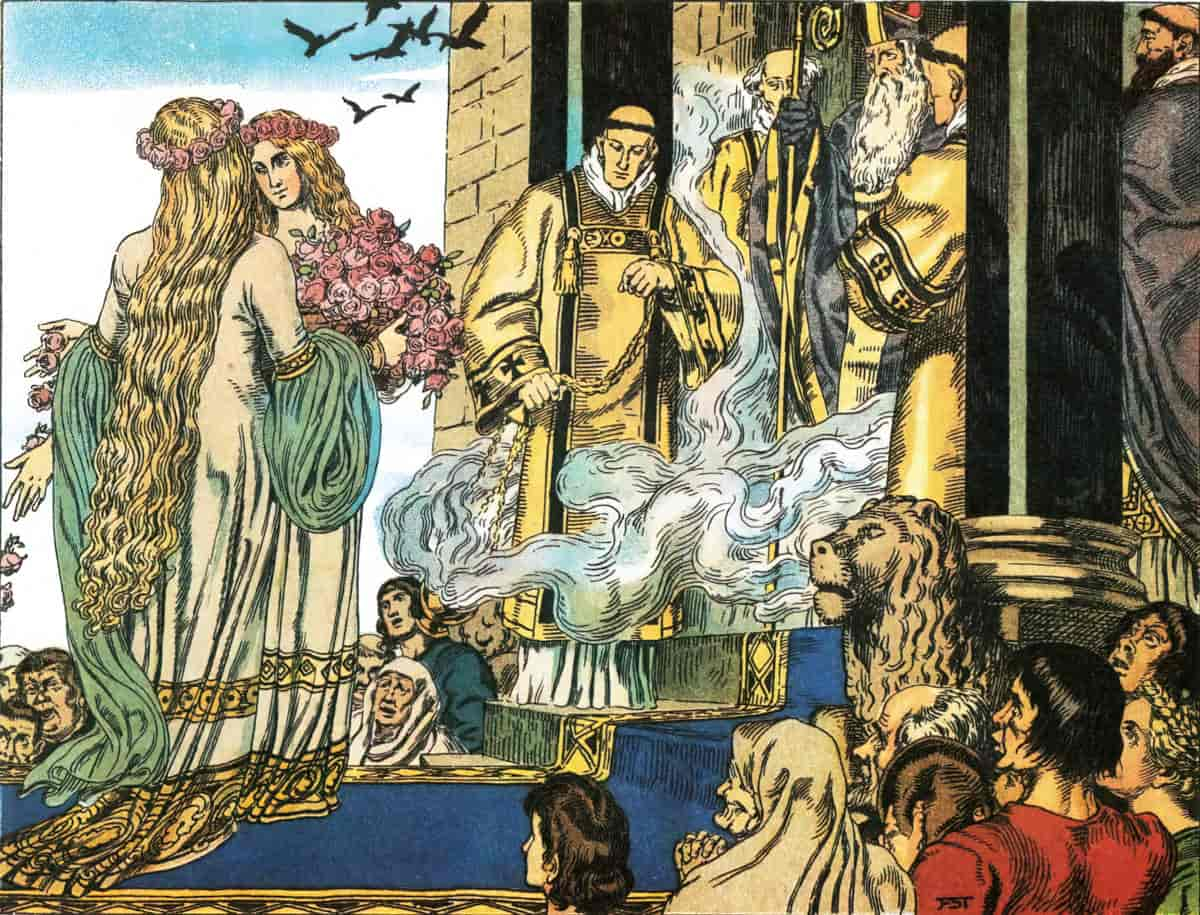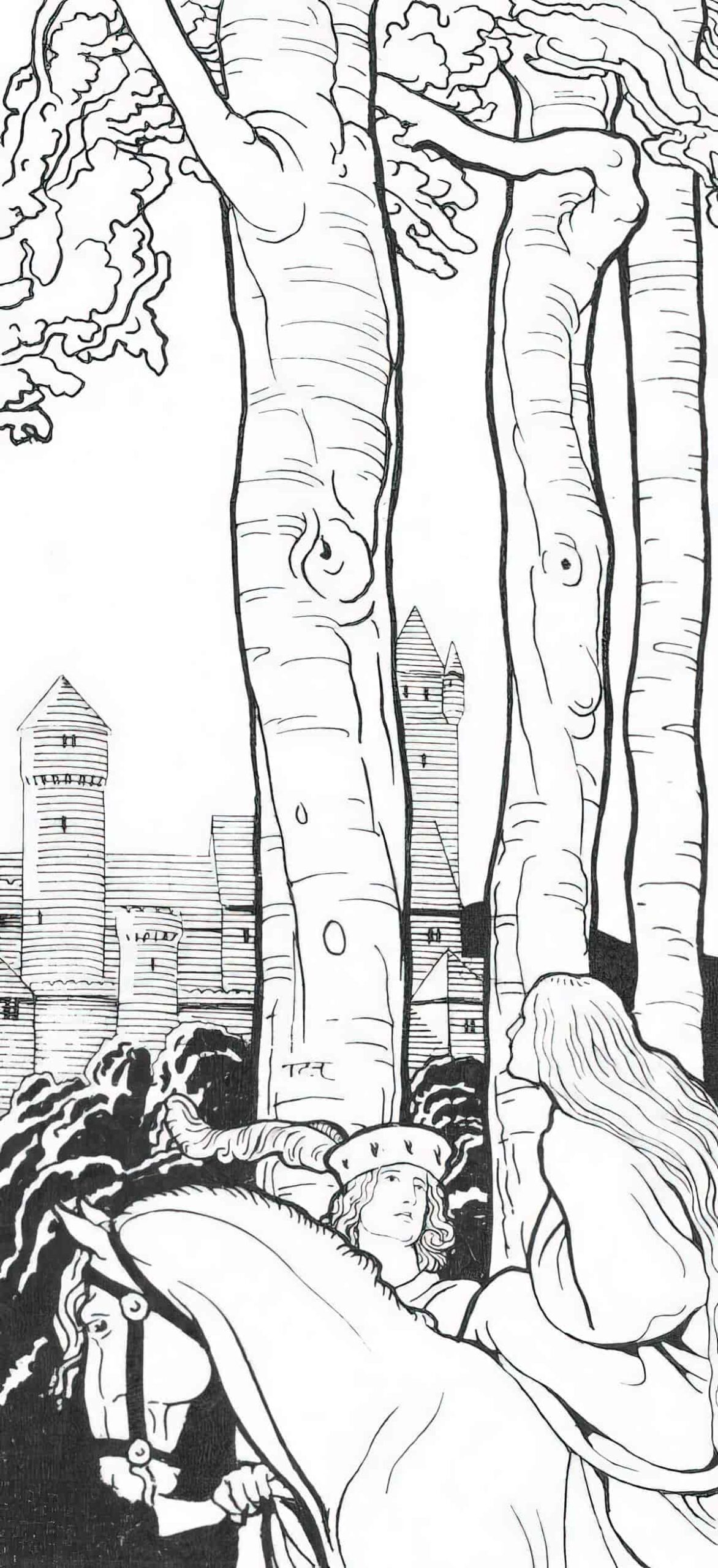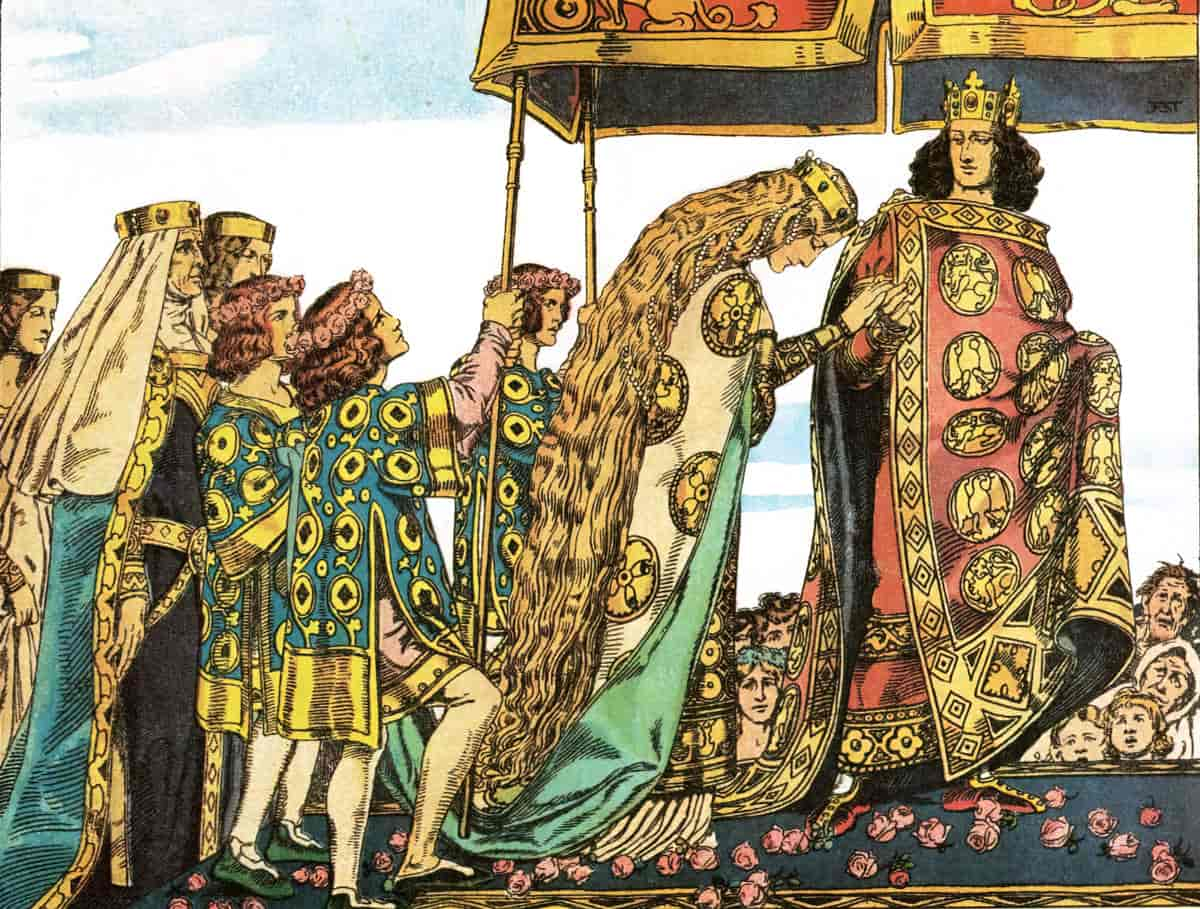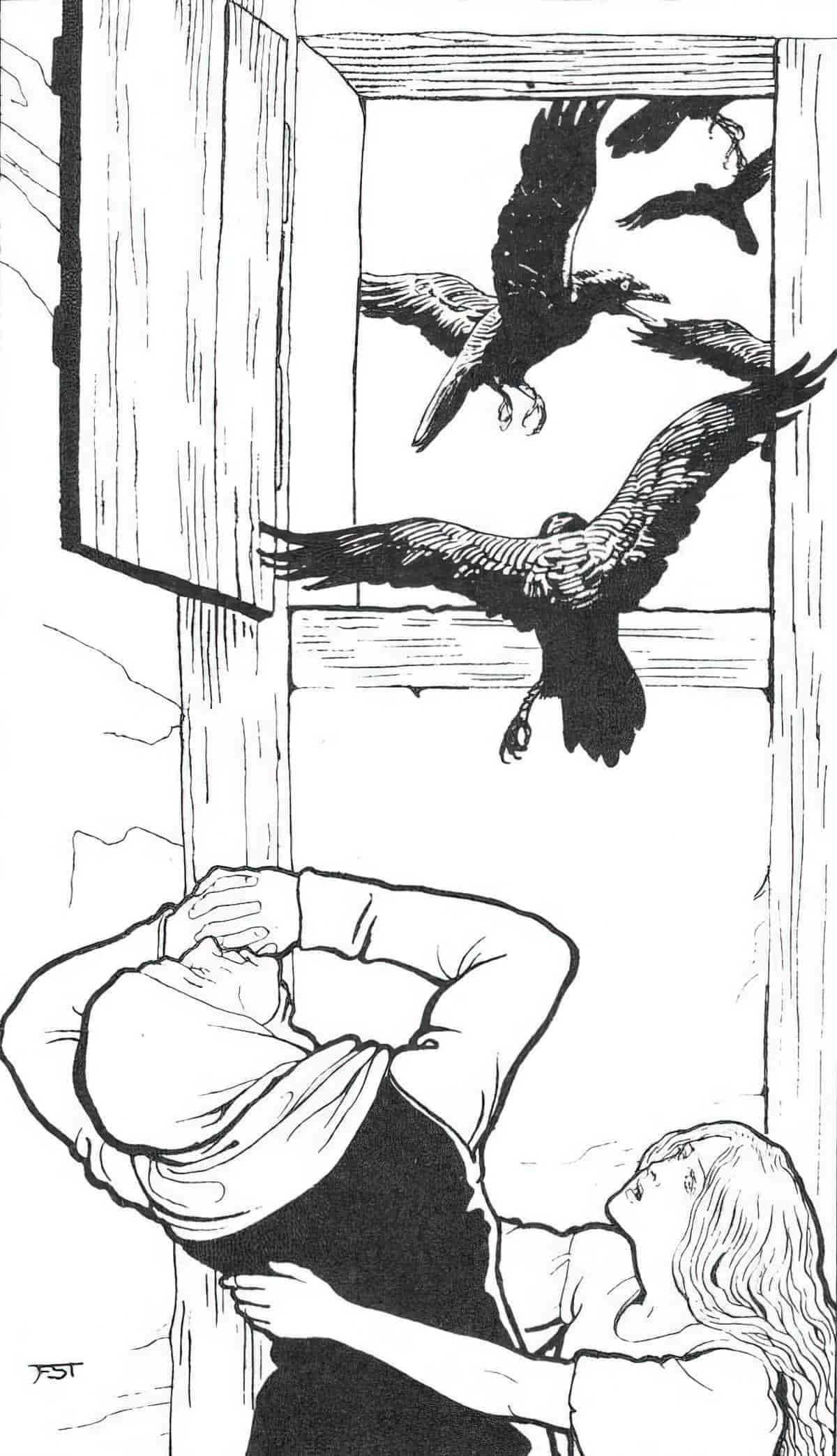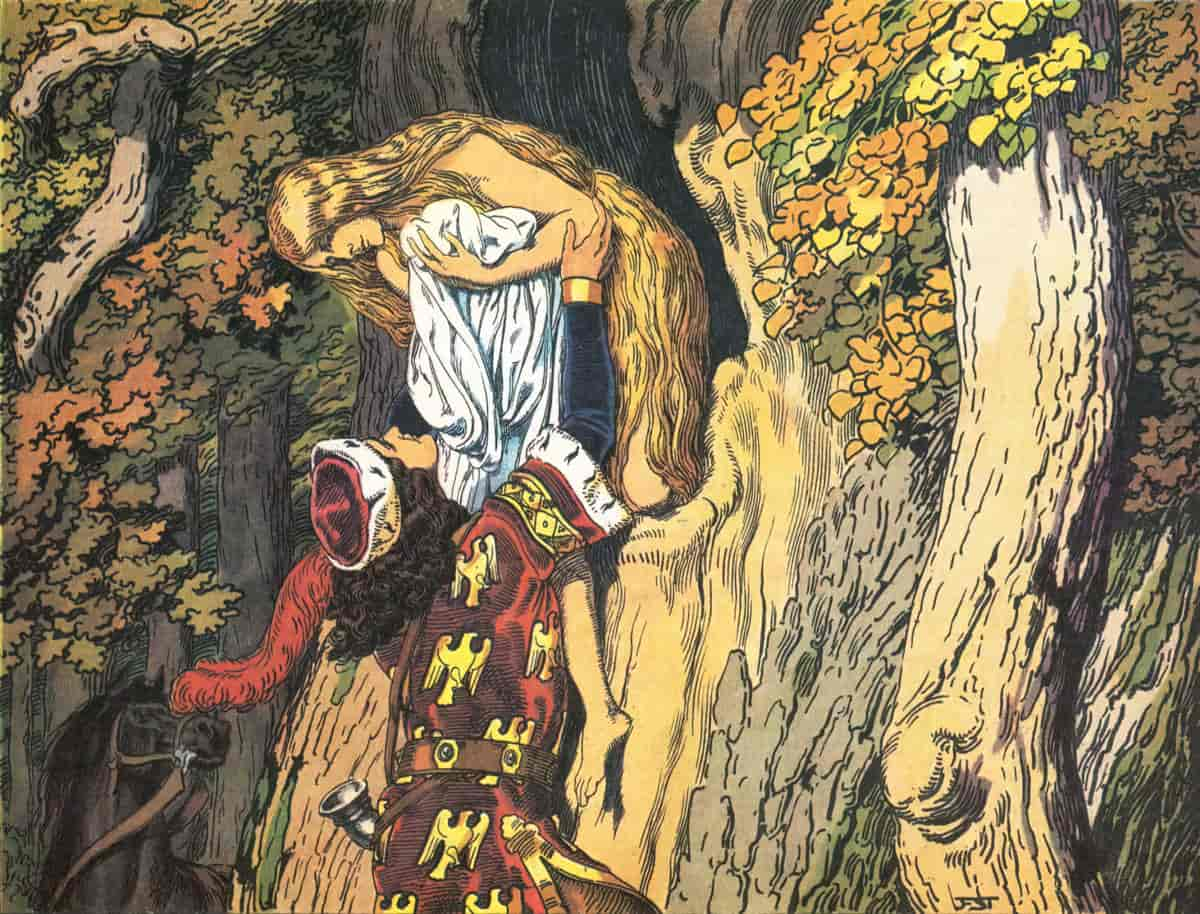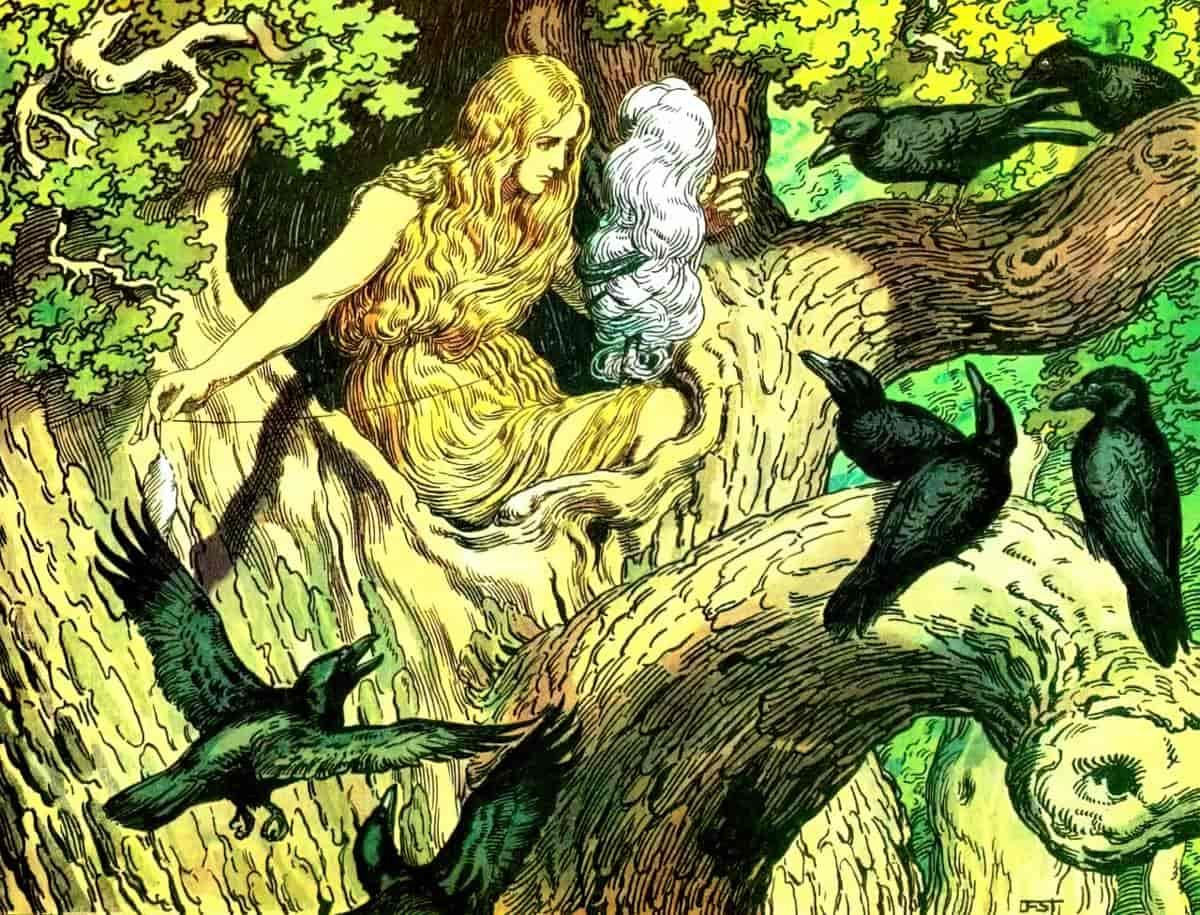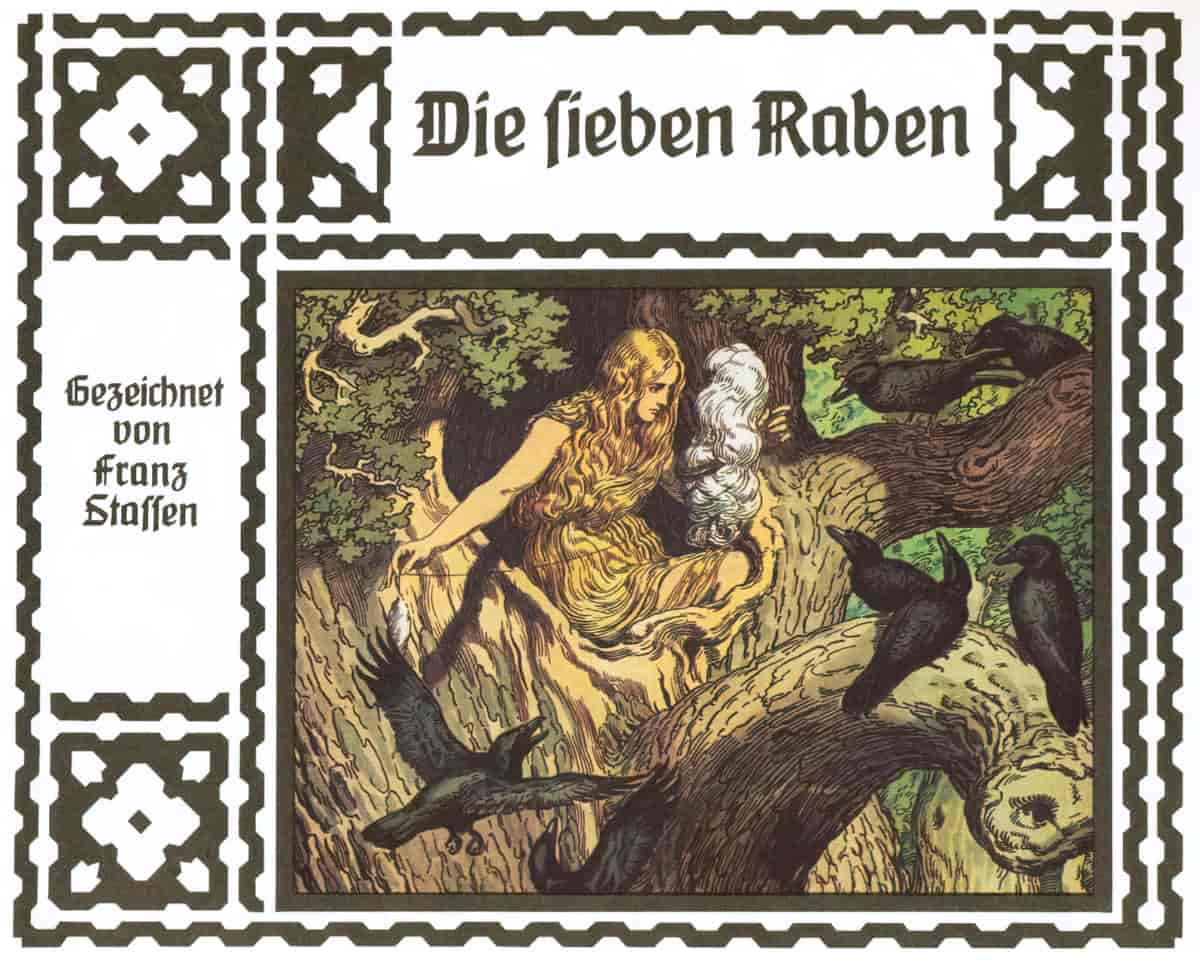“The Seven Ravens” is a fairytale collected by the Grimm Brothers. In an earlier time, this tale would emphasise the importance of family, with a moral lesson of obedience and respect towards parents.
SHORT SUMMARY OF “THE SEVEN RAVENS”
A father curses his sons and turns them into ravens. Years later, their little sister travels to the sun, the moon, the morning star and the Glass Mountain to get them back.
“THE SEVEN RAVENS”
A man had seven sons, but however much he wished for a daughter, he did not have one yet. Finally his wife gave him hope for another child, and when it came into the world it was indeed a girl. Great was their joy, but the child was sickly and small, and because of her weakness, she was to be given an emergency baptism.
The father sent one of the boys to run quickly to the well and get some water for the baptism. The other six ran along with him. Because each one of them wanted to be first one to dip out the water, the jug fell into the well. There they stood not knowing what to do, and not one of them dared to go home.
See: The Symbolism of Water Wells
When they did not return the father grew impatient, and said, “They have forgotten what they went after because they were playing, those godless boys.”
Fearing that the girl would die without being baptized, he cried out in anger, “I wish that those boys would all turn into ravens.”
He had hardly spoken these words when he heard a whirring sound above his head, and looking up, he saw seven coal-black ravens flying up and away.
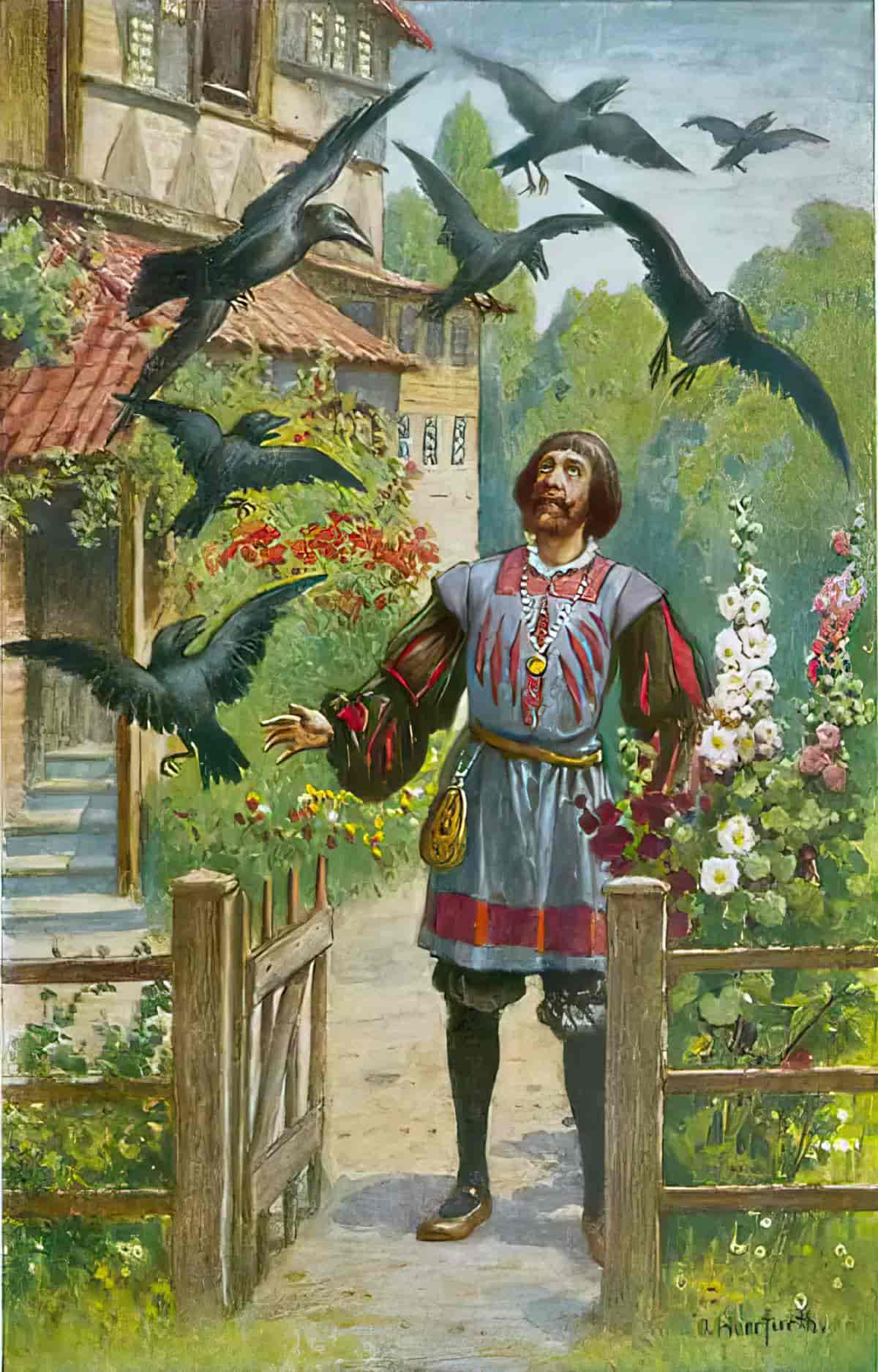
Why ravens? Ravens is… oddly specific. This father is basically wishing bad luck upon his sons. Ravens are seen as ominous figures, consistent with the way ravens are often portrayed in other fairy tales and legends.
“The Seven Ravens” has a strong patriarchal theme. A father punishes his sons for their disobedience. The only way to break the curse is through a female sacrifice.
The parents could not take back the curse, and however sad they were at the loss of their seven sons, they were still somewhat comforted because of their dear little daughter, who soon gained strength and became more beautiful every day.
For a long time she did not know that she had had brothers, for her parents took care not to mention them to her. However, one day she accidentally overheard some people talking about her. They said that she was beautiful enough, but that in truth she was to blame for her seven brothers’ misfortune. This troubled her greatly, and she went to her father and mother and asked them if she indeed had had brothers, and what had happened to them.
When infant mortality was much higher, many people grew up under the spectre of older, dead siblings. This story would speak to what we now call ‘survivor’s guilt’. A living child can never live up to the ameliorated memories of a dead ghost sibling, hence another reason for finding the brothers, perhaps.
Her parents could no longer keep the secret, but said that it had been heaven’s fate, and that her birth had been only the innocent cause. However, this ate at the girl’s conscience every day, and she came to believe that she would have to redeem her brothers.
She had neither rest nor peace until she secretly set forth and went out into the wide world, hoping to find her brothers and to set them free, whatever it might cost. She took nothing with her but a little ring as a remembrance from her parents, a loaf of bread for hunger, a little jug of water for thirst, and a little chair for when she got tired.
She walked on and on — far, far to the end of the world. She came to the sun, but it was too hot and terrible, and ate little children.
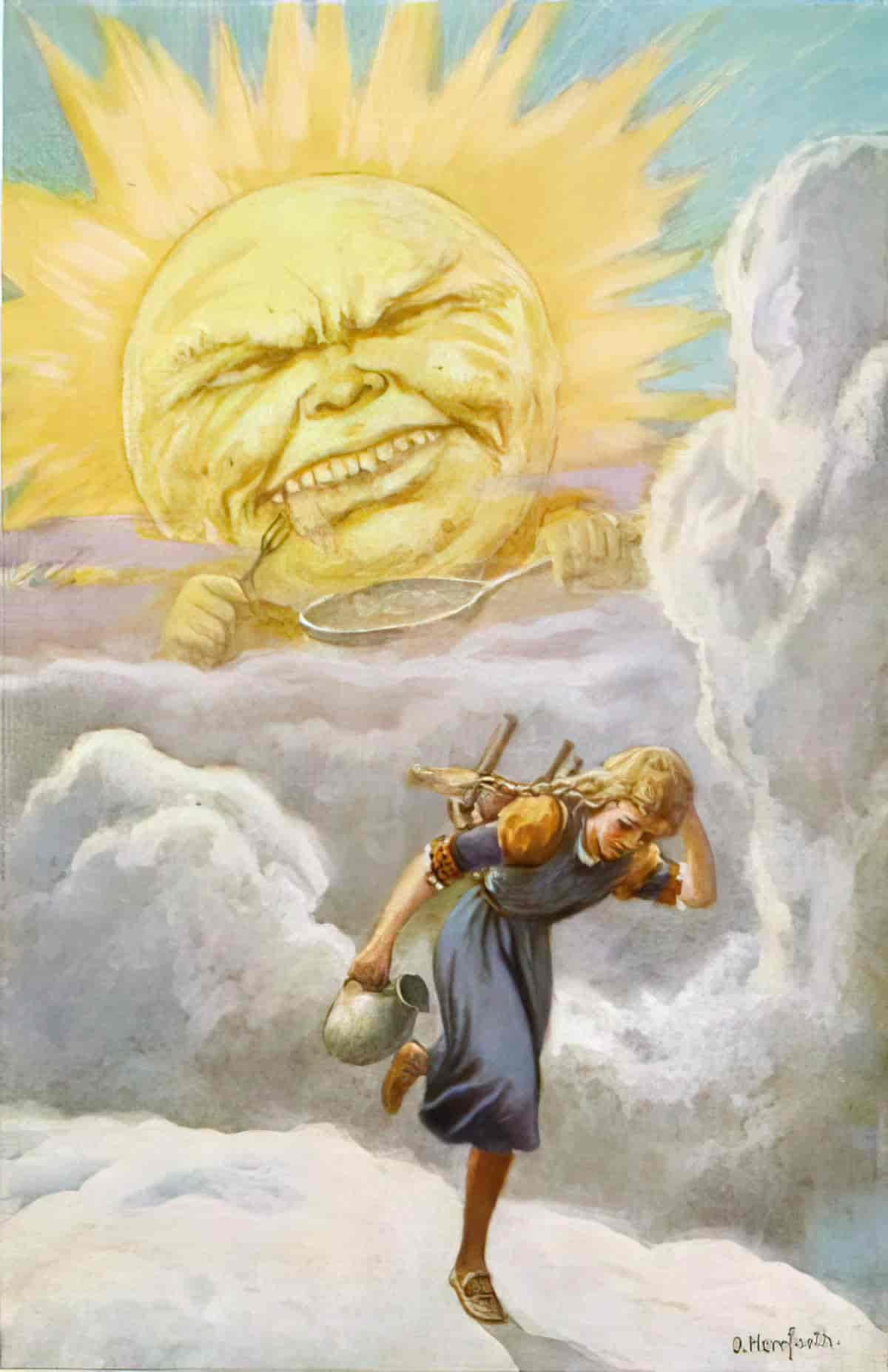
She hurried away, and ran to the moon, but it was much too cold, and also frightening and wicked, and when it saw the child, it said, “I smell, smell human flesh.”
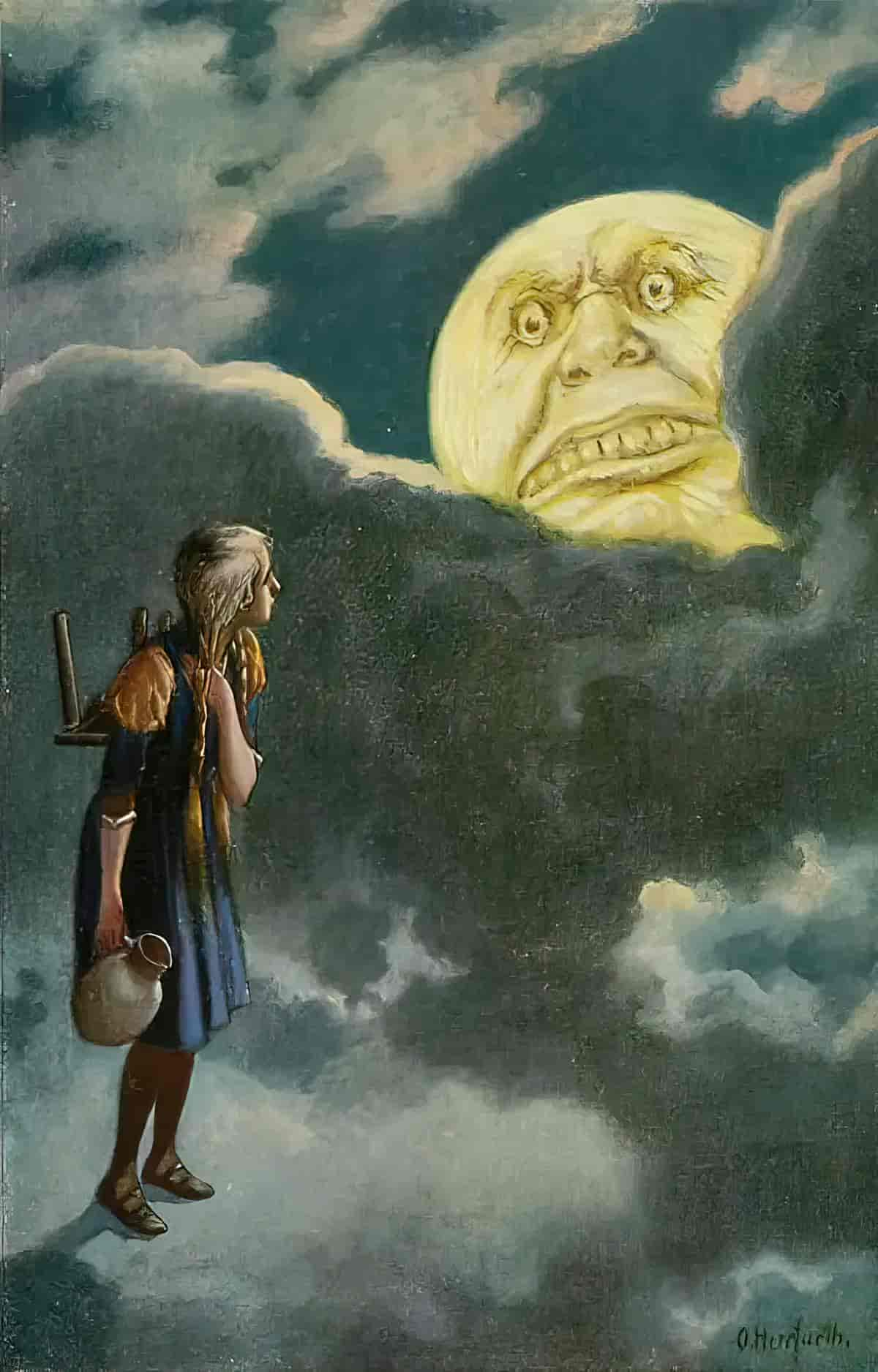
Then she hurried away, and came to the stars, and they were friendly and good to her, each one sitting on its own little chair.
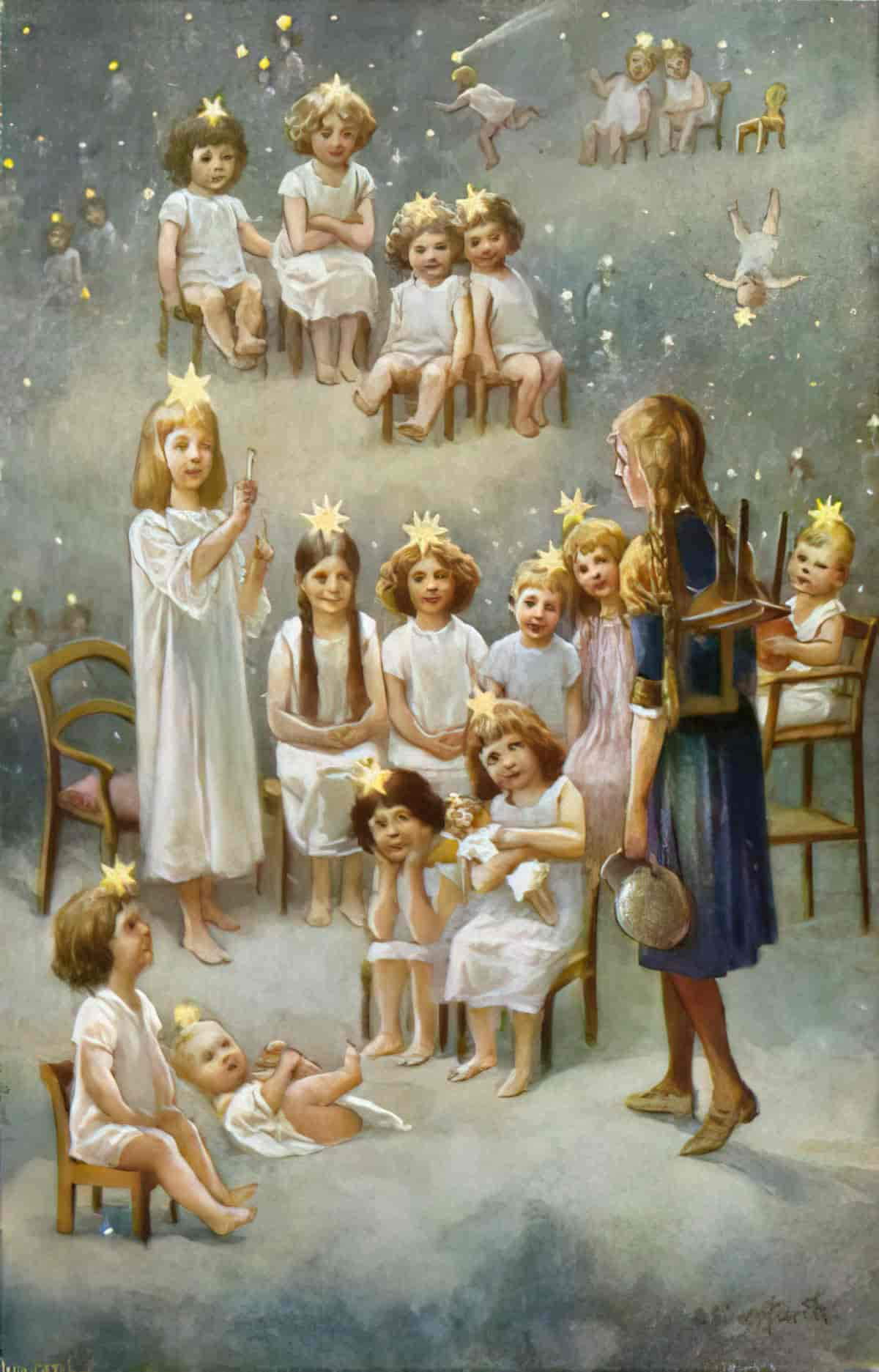
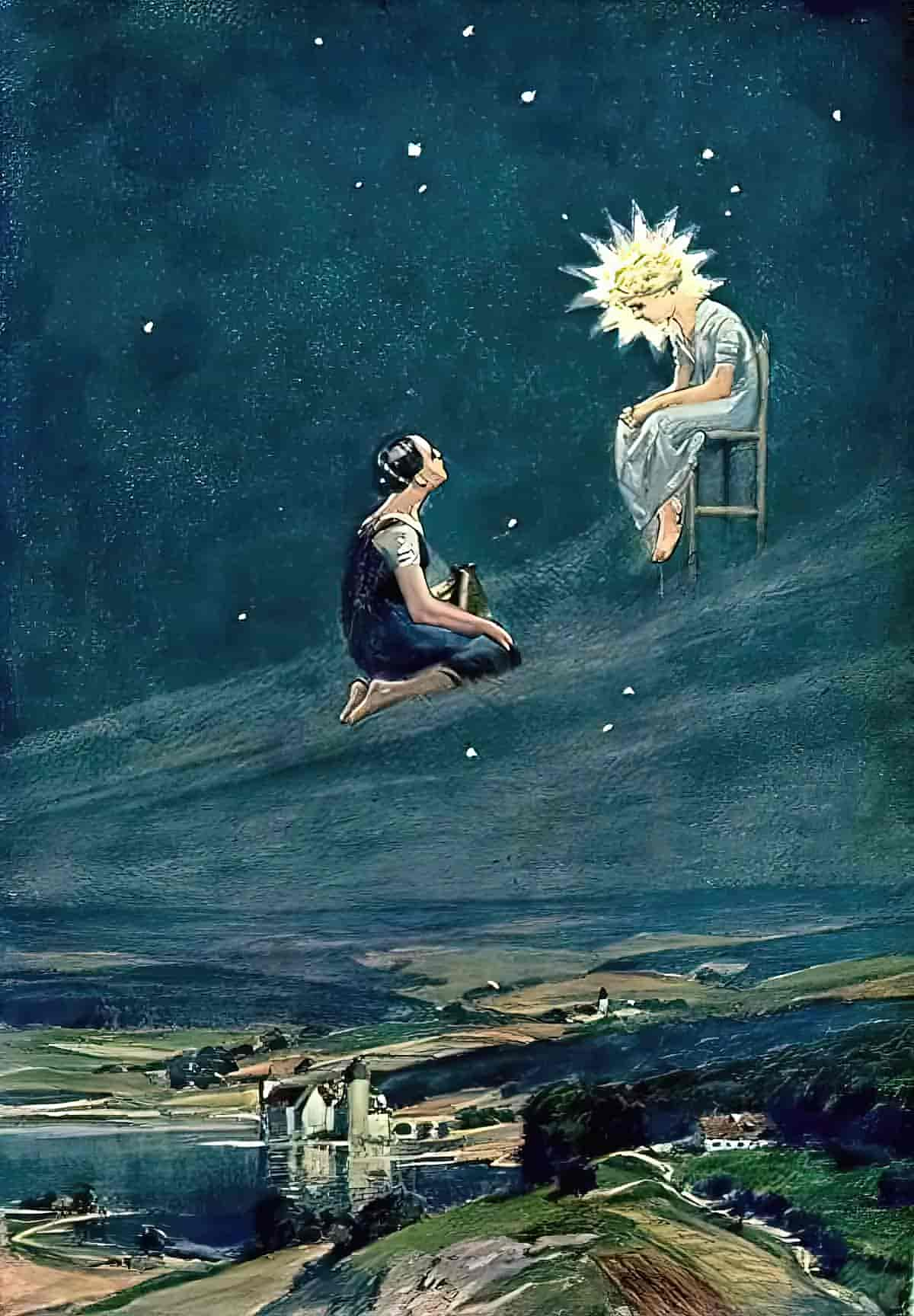
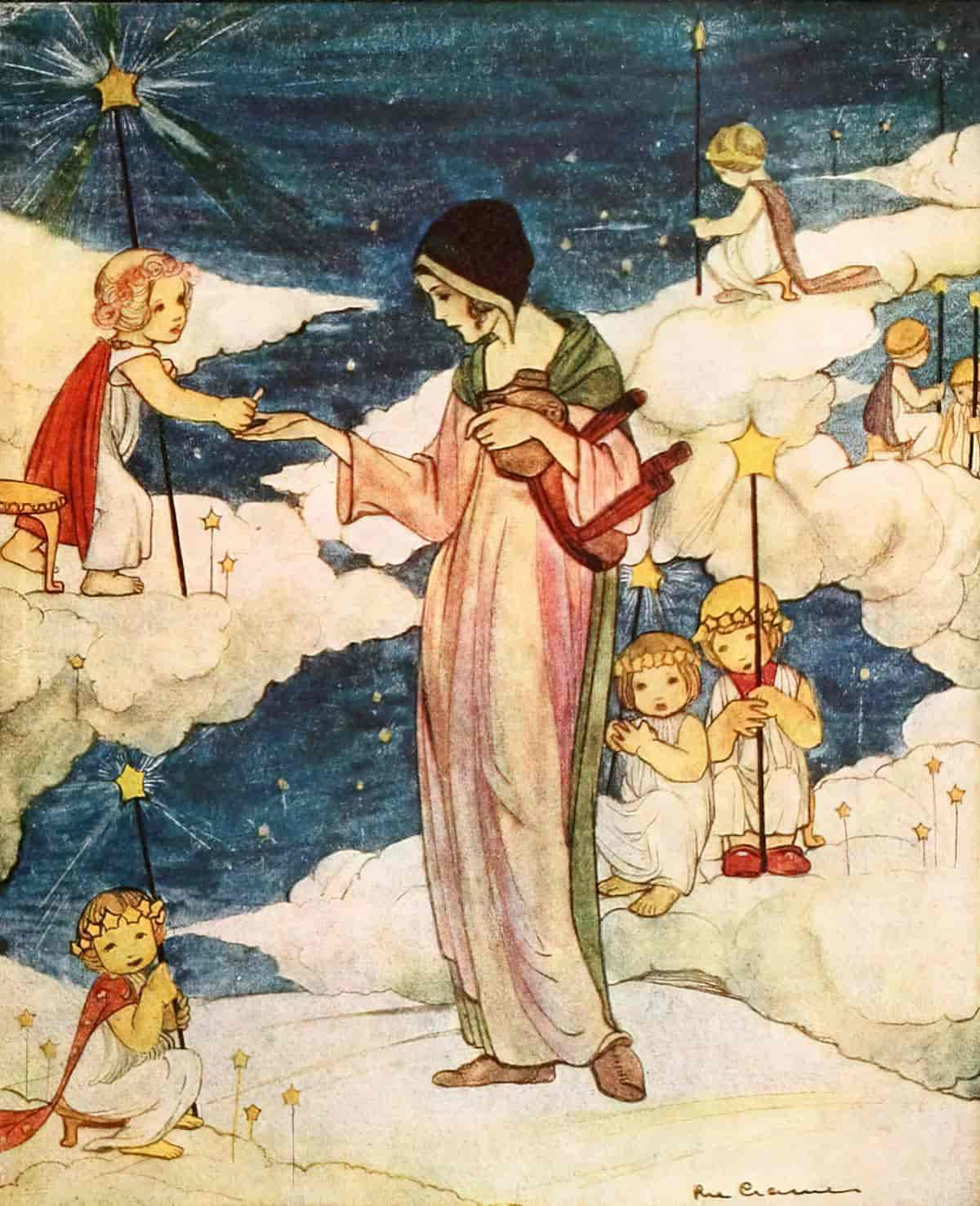
When the morning star arose, it gave her a chicken bone, and said, “Without that chicken bone you cannot open the glass mountain, and your brothers are inside the glass mountain.”
WHAT’S THE MEANING OF THE GLASS MOUNTAIN IN FAIRYTALES?
The glass mountain is a common motif in fairy tales, and its meaning can vary depending on the context in which it appears. According to fairytale critics, the glass mountain can be interpreted in several ways:
- As a symbol of a difficult or impossible task: The glass mountain may represent a seemingly insurmountable obstacle that the protagonist must overcome in order to achieve their goal.
- As a symbol of spiritual or emotional journey: The glass mountain can represent a difficult journey that the protagonist must undertake in order to achieve self-discovery or inner growth.
- As a symbol of a change or transformation: Climbing the glass mountain may symbolize the process of change and transformation, and the protagonist’s ability to adapt to new and challenging situations.
- As a symbol of wealth and prosperity: The glass mountain can also represent wealth and prosperity, with the treasures and precious stones on top of it.
- As a symbol of fragility: The glass mountain also can represent something fragile and delicate, something that can easily be broken, and that must be handled with care.
The girl took the bone, wrapped it up well in a cloth, and went on her way again until she came to the glass mountain. The door was locked, and she started to take out the chicken bone, but when she opened up the cloth, it was empty. She had lost the gift of the good stars.
What could she do now? She wanted to rescue her brothers, but she had no key to the glass mountain. The good little sister took a knife, cut off one of her little fingers, put it into the door, and fortunately the door opened.
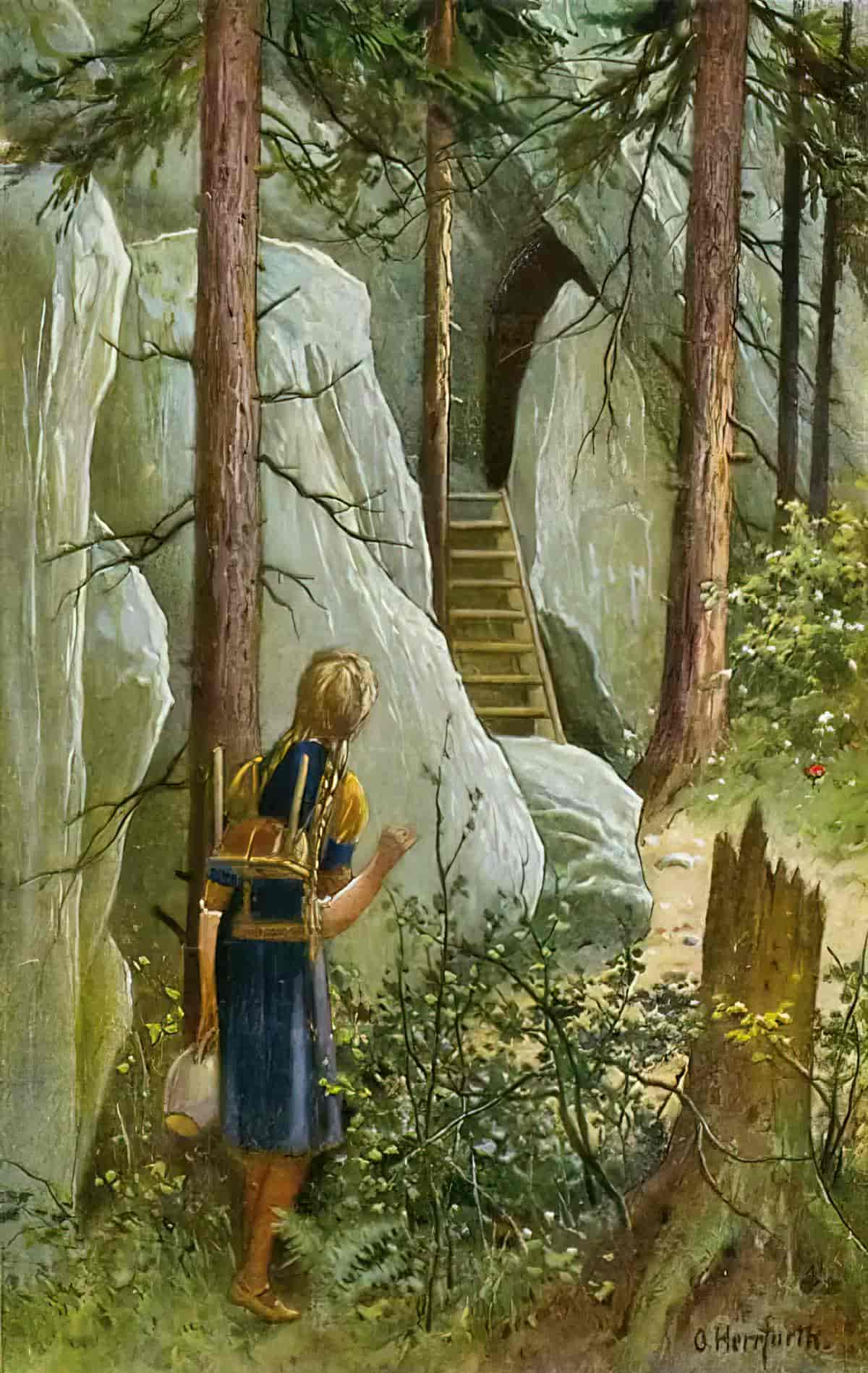
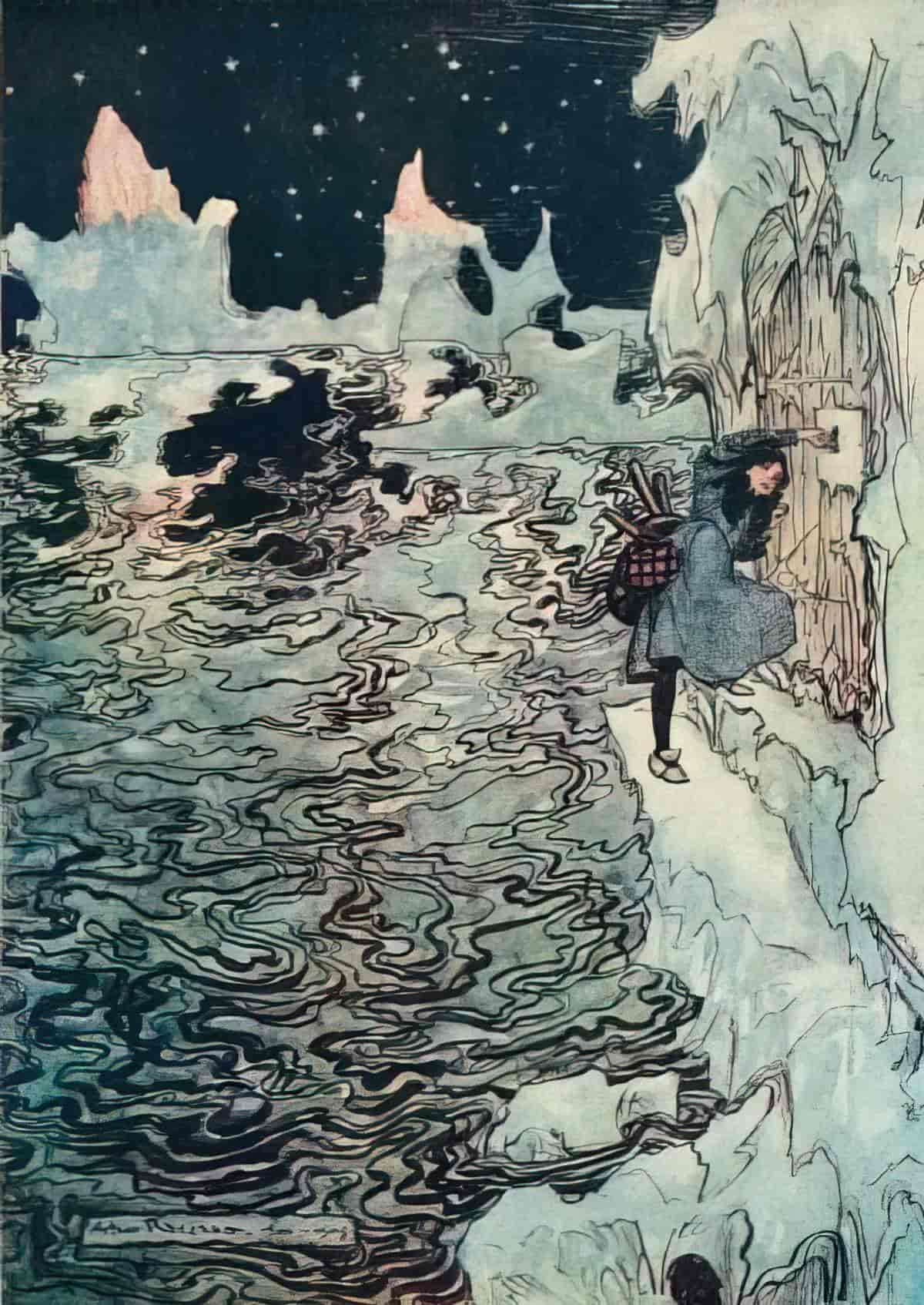
After she had gone inside a little dwarf came up to her and said, “My child, what are you looking for?”
“I am looking for my brothers, the seven ravens,” she replied.
The dwarf said, “The lord ravens are not at home, but if you want to wait here until they return, step inside.”
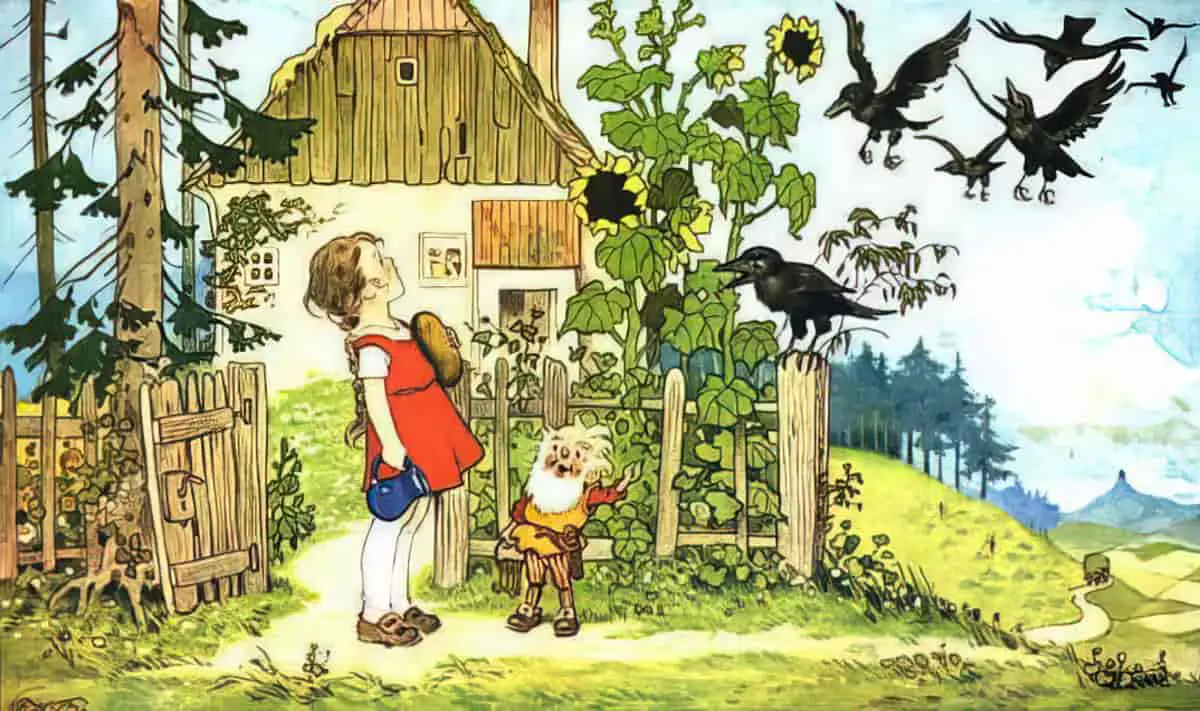
Then the dwarf carried in the ravens’ dinner on seven little plates, and in seven little cups. The sister ate a little bit from each plate and took a little sip from each cup. Into the last cup she dropped the ring that she had brought with her.
These days, rings are exchanged as symbols of romantic love. Here the ring is a symbol of familial love.
Suddenly she heard a whirring and rushing sound in the air, and the dwarf said, “The lord ravens are flying home now.”
They came, wanted to eat and drink, and looked for their plates and cups. Then one after the other of them said, “Who has been eating from my plate? Who has been drinking from my cup? It was a human mouth.”
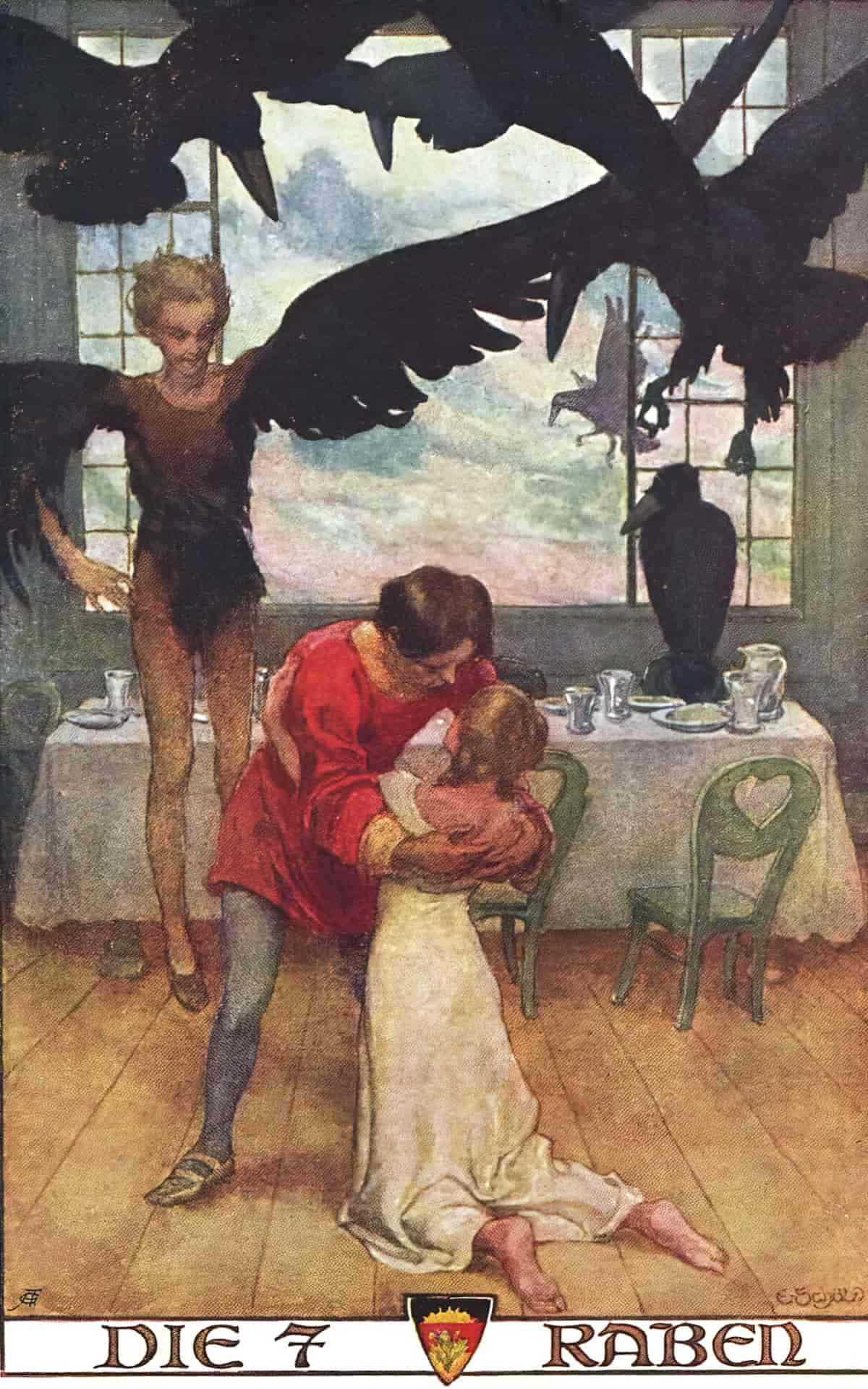
When the seventh one came to the bottom of his cup, the ring rolled toward him. Looking at it, he saw that it was a ring from their father and mother, and said, “God grant that our sister might be here; then we would be set free.”
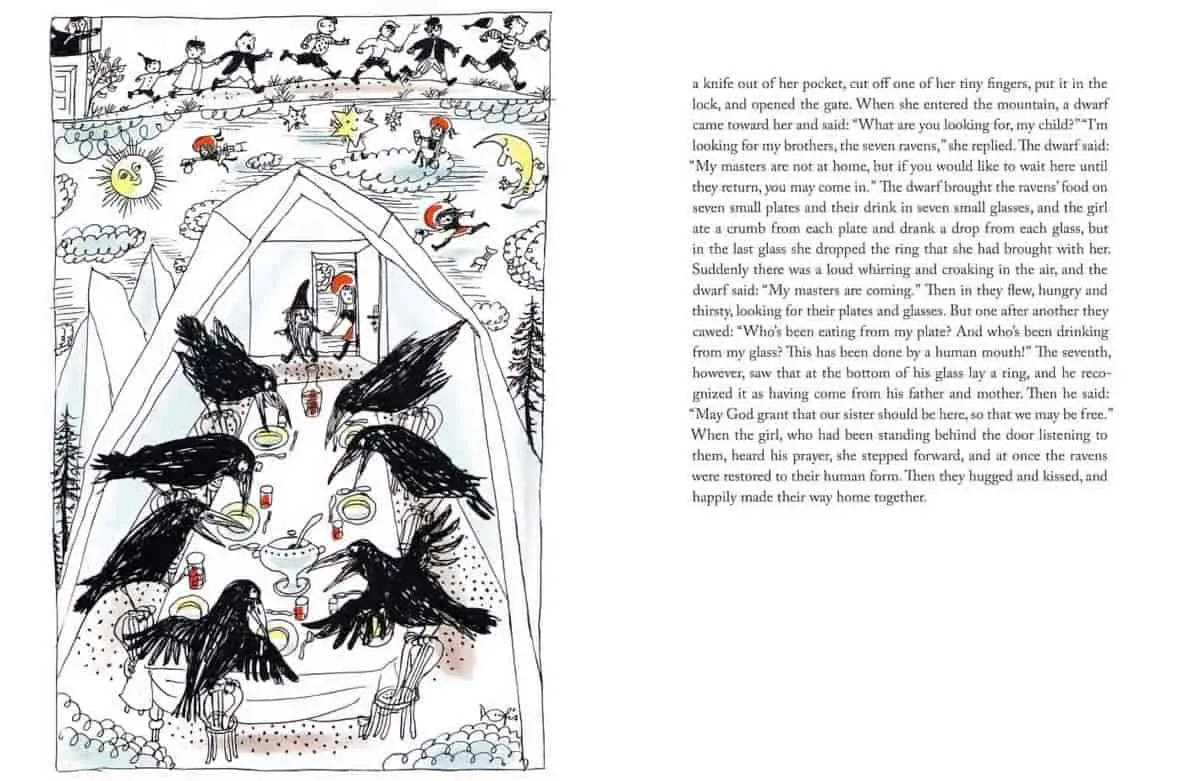
The girl was listening from behind the door, and when she heard this wish she came forth. Then the ravens were restored to their human forms again. They hugged and kissed one another, and went home happily.”
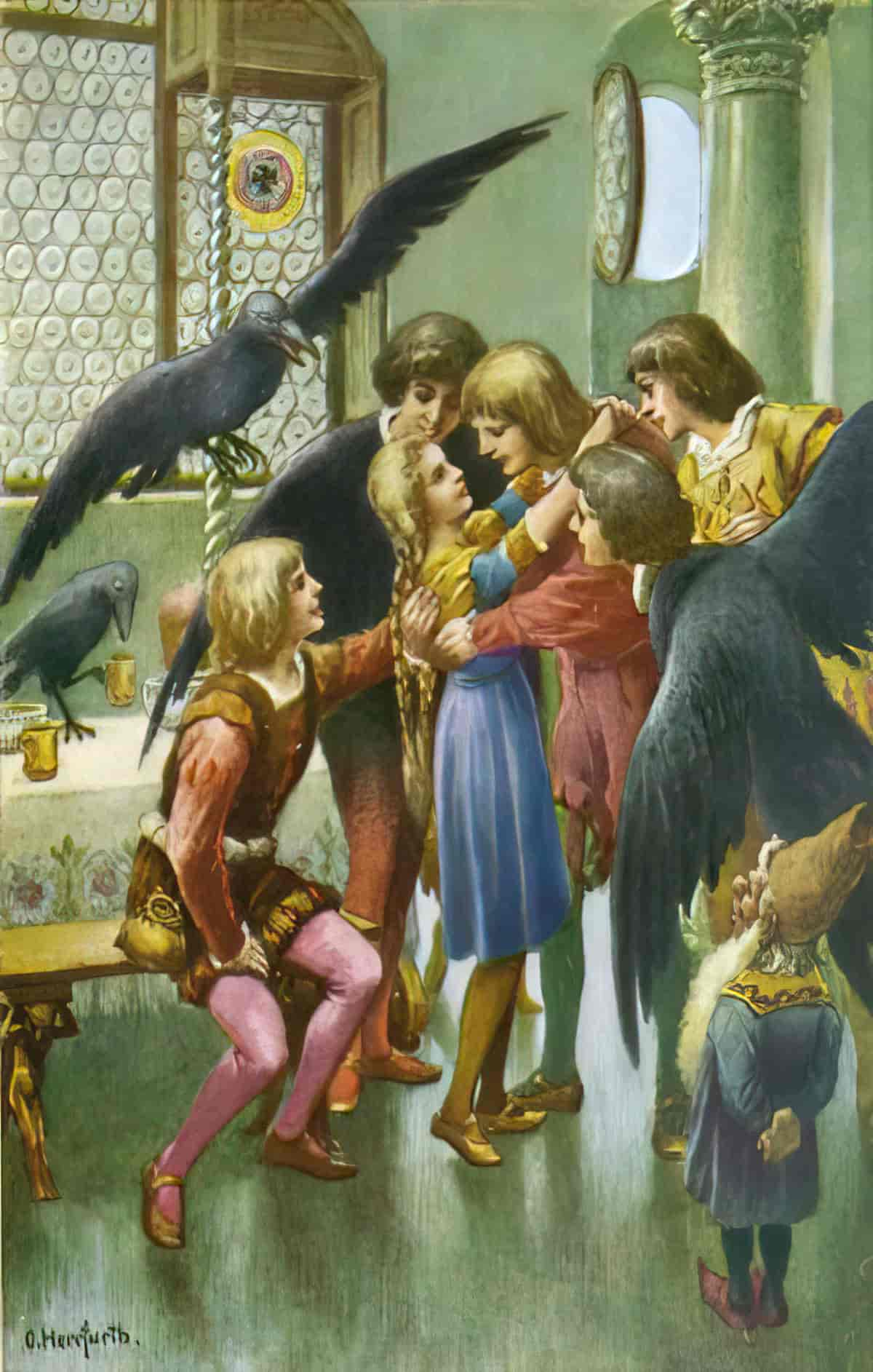
Are “Gerda and the Ravens” and “The Seven Ravens” the same fairytale?
“Gerda and the Ravens” and “The Seven Ravens” are two different fairytales with some similarities, namely, they both have ‘raven’ in the title. They are both adventure stories, and a brother-sister bond, but the plots are completely different.
“The Seven Ravens” is a German fairytale collected by the Brothers Grimm in their book “Grimms’ Fairy Tales.” All seven sons are turned into ravens by their father’s curse. The only way to break the curse is to find a maiden who is willing to cry tears of blood for them. The youngest son, who was not cursed, sets out on a journey to find such a maiden and eventually succeeds with the help of his sister.
“Gerda and the Ravens” is a Scandinavian fairytale. A girl named Gerda goes on a journey to save her brother, who has been taken by the Snow Queen. Along the way, she meets a group of friendly ravens who help her on her quest. This story is quite similar to “The Snow Queen” by Hans Christian Andersen.
“The Seven Ravens” has far more in common with “The Wild Swans” by Hans Christian Andersen. (Anderson’s version, “The Wild Swans”, was published in 1838. His literary fairytale is based on a type of folk tale collected by the Grimms as “The Twelve Brothers,” “The Seven Ravens” and “The Six Swans.”)
“The Six Swans” and “The Juniper Tree” also feature a curse and a journey to break it.
“Les Sept Corbeaux (Seven Ravens)” pop-up book illustrated by Vojtěch Kubašta
Header illustration: Franz Stassen (1869 – 1949), German painter, draftsman and illustrator. Stassen’s art was influenced by the realistic forms of the 1800s and by the Art Nouveau movement. You’ll find lots of Christian motifs in his work.
More illustrations from Stassen’s German version of this tale:
